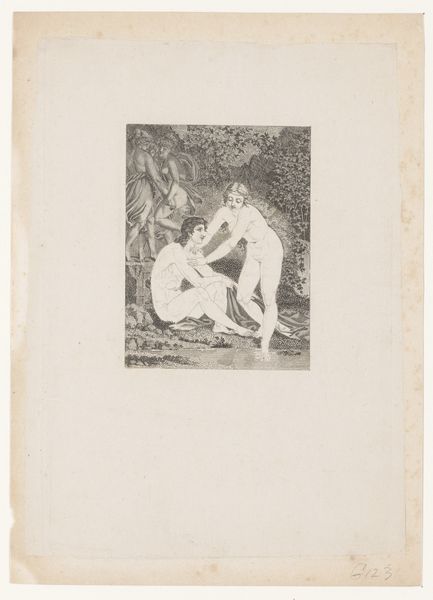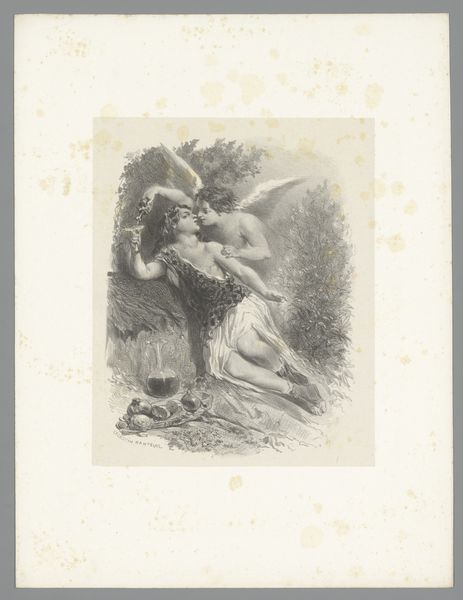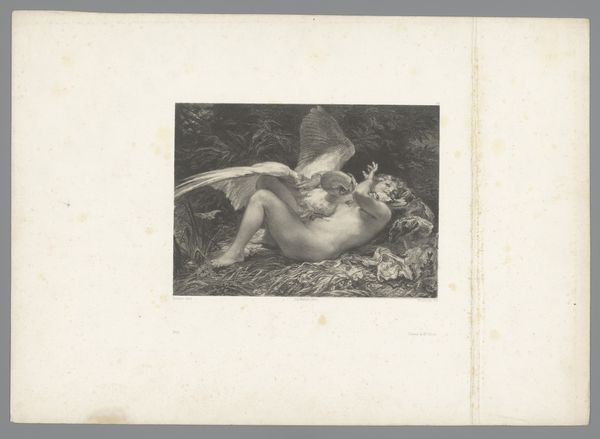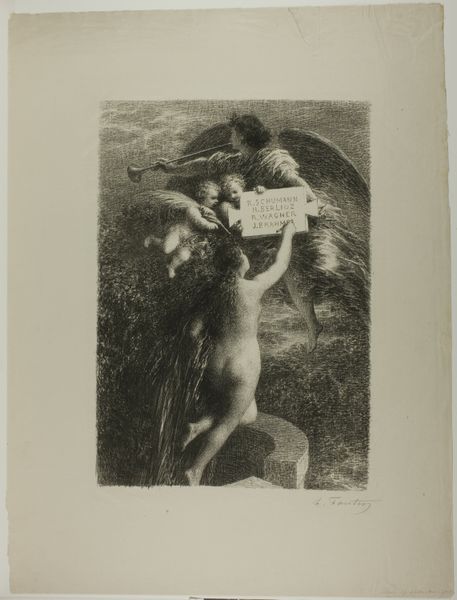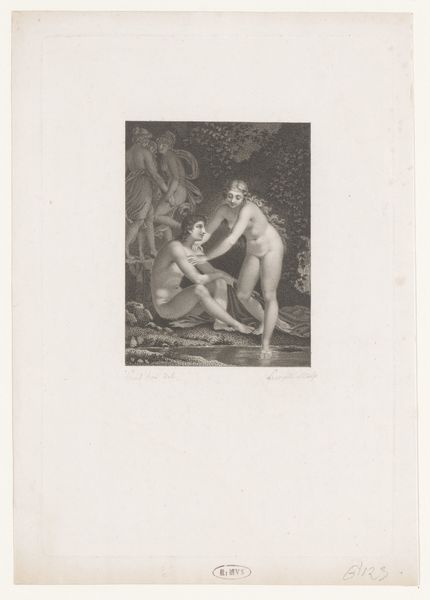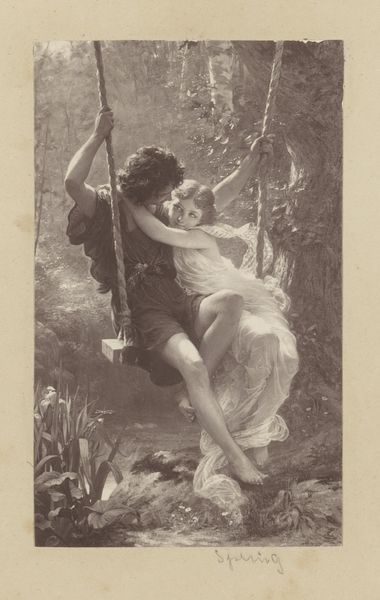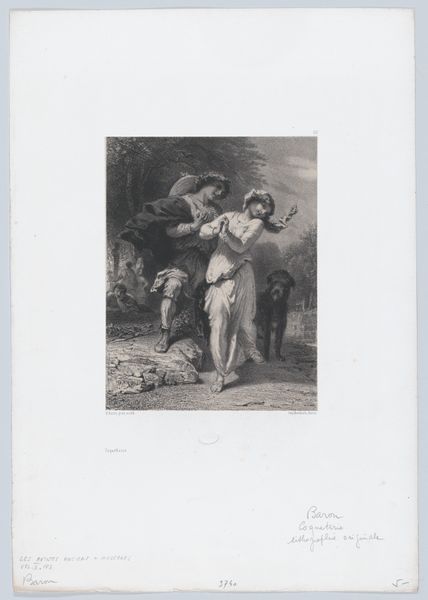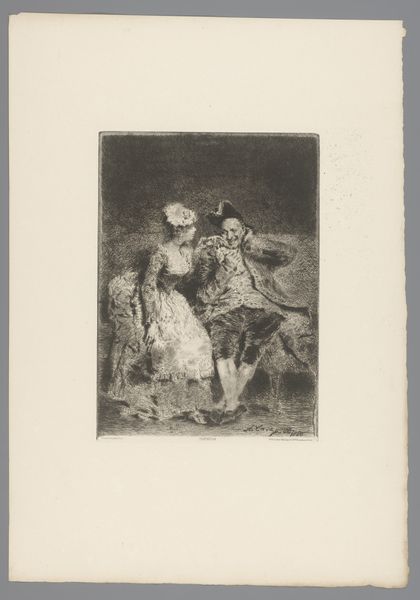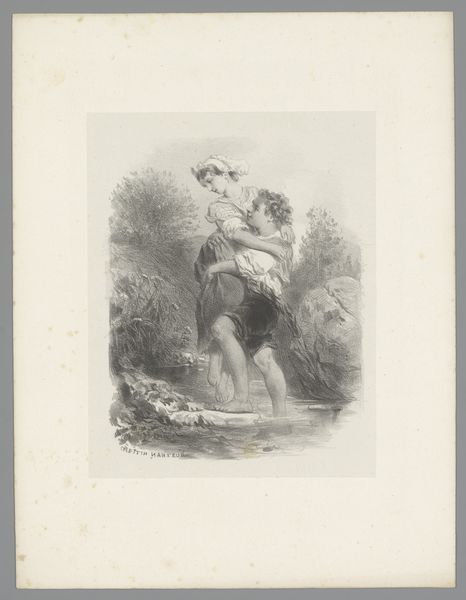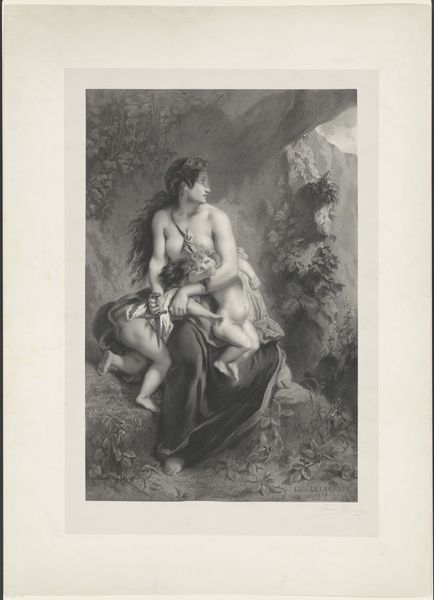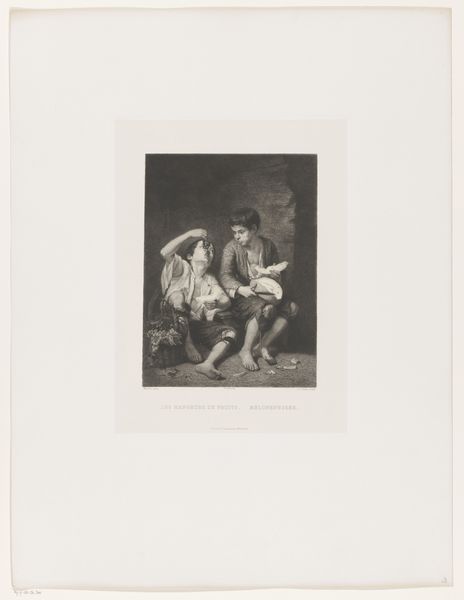
Dimensions: height 376 mm, width 274 mm
Copyright: Rijks Museum: Open Domain
Editor: This engraving by Lionel Aristide Lecouteux from 1878, titled "Mannelijke en vrouwelijke centaur" depicts a male and female centaur in what appears to be an intimate embrace. The style feels quite romantic, and almost dreamlike. What do you see in this piece beyond the initial subject matter? Curator: Beyond the romantic visual, this engraving functions within a complex web of historical power dynamics and gender representation. Centaurs, traditionally symbols of untamed masculinity and base instincts, are here re-contextualized. Editor: How so? Curator: Note how Lecouteux renders the female centaur. The narrative within the public art sphere often utilized the female form – mythological or otherwise – to portray an idealized, often sexualized vision. In this way, public perception of gender was heavily influenced, contributing to the construction of socially acceptable norms for the role of men and women. The choice to show this intimate embrace becomes political when we understand that art served as a tool to establish and promote cultural values. Editor: So you’re saying the artist’s choices about the subjects, like centaurs, and how they are represented were affected by social ideas and were actually contributing to a bigger societal conversation? Curator: Precisely. Consider too that this work was made during a period of significant societal shifts with discussions on the evolving roles of gender and class relations becoming more pronounced within intellectual and political circles. What kind of values were they conveying, intentionally or unintentionally? And how might these depictions of centaurs influence broader discussions about morality and freedom? Editor: I see… It gives the print so much more depth knowing it's part of these conversations and influencing, as well as reflecting, societal norms. Thanks! Curator: Absolutely. It is an interplay between personal artistry and the broader social environment. Considering art as a participant, not just a reflection, is what truly opens it up for inquiry and comprehension.
Comments
No comments
Be the first to comment and join the conversation on the ultimate creative platform.
